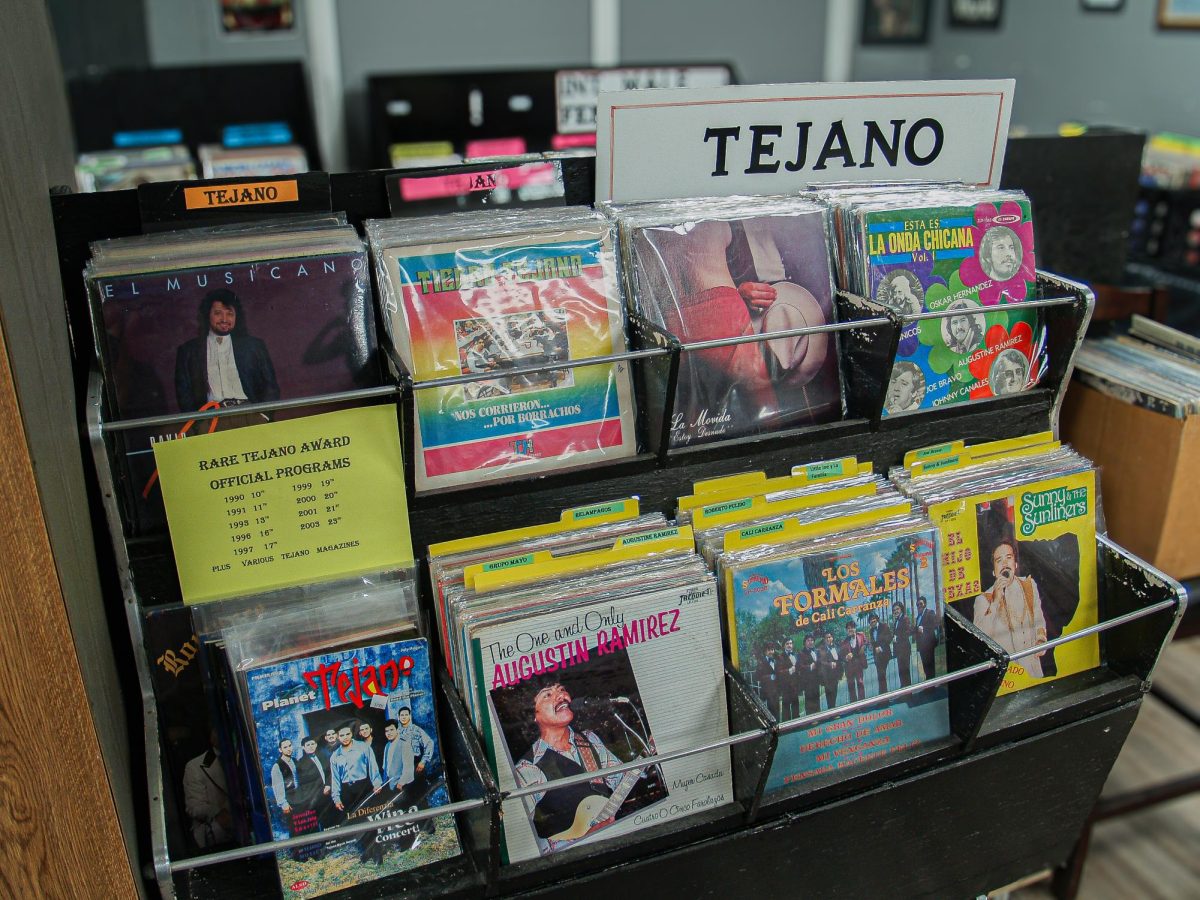Two fans. Two brushes. Ink. Paint. Water.
Students who attended the Taiwanese Visiting Artist Workshops on Nov. 13 were given these items to create their very own decorated fans with the help and instruction of two Taiwanese art professors.
The event was sponsored by UTSA’s East Asia Institute (EAI), Ministry of Culture of the Republic of China (Taiwan), Houston’s Taiwan Academy and the Southwest School of Art.
Each workshop lasted about ninety minutes with a fifteen minute snack break between lectures.
In the first workshop, Dr. Shih-Chiung Hsiao, a fine arts professor at Asia University in Taichung and an award-winning expert in Chinese calligraphy, demonstrated how to write the symbols for “big,” “good luck” and “sheep” on a silk fan to bring lots of good luck for 2015, the year of the sheep.
According to Mimi Yu, the director of the EAI, calligraphy is a highly important aspect of Eastern art. “In order to be accepted into an art school there, you must first pass a calligraphy test,” she said.
Hsiao first lectured about the symbols he was teaching and then showed a video of himself writing the symbols on a fan. The video played on a loop so students could copy the motions first on scratch paper and then onto a silk fan while Hsiao walked around the room helping students.
After many completed their fans, Hsiao, Yu and the other art professors translated students’ names into calligraphy and wrote them on their fans. Hsiao also stamped each fan with a red crest.
Sulin Su, a Chinese professor at UTSA who attended the event with her teenage daughter, also helped translate students’ names.
“When I was growing up, we had to practice calligraphy every day,” Su said. “However, I learned a traditional style. This is more artistic.”
After the calligraphy workshop and a short break, Professor Emeritus Chuan Chang, who recently retired from Chung Yung Christian University in Chia Yi, lectured on the appreciation of ink paintings.
“Chrysanthemums bloom in the fall and stand through the winter,” Yu said, translating for Chang. “They represent strength.”
After his lecture, he demonstrated how to draw stems, flowers and leaves, also displayed on a looping video. The brushstrokes, he said, are the same that are used in calligraphy. After learning each of these parts one-by-one, students were then repeatedly shown a 10-minute video of Chang drawing on a paper fan.
When the paper fans were complete, Chang then asked questions about his lecture. Students who answered correctly were awarded a copy of his art book.
The event was marketed primarily to art students. One art professor, Benjamin McVey, brought his entire drawing class of about 15 students to the event.
“We don’t go over anything like this in the class,” McVey said. “I just wanted to get them out of the classroom.”
This was the second time the EAI held this event. At last year’s event, the EAI had such a tremendous turnout that they were forced to turn people away. This year, due to the event’s popularity, students had to register to attend. All 70 spots were taken by the fourth day after registration opened.
Despite initial misgivings, students who attended the event had only positive things to say afterwards. Communication major Teresa Price, who attended for her business and professional speech class, admitted, “Honestly, I thought it would be boring with (the artists) just talking about how to do it, but I like it. It’s hands-on. They show us how to do it.”






